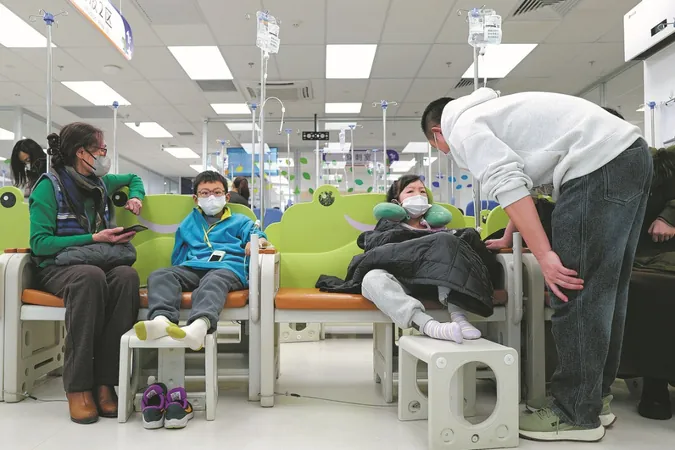
WHO and China Confirm Respiratory Infections Are Normal for Winter - No Cause for Alarm!
2025-01-09
Author: Wei
Introduction
In a reassuring update regarding respiratory infections in China, the World Health Organization (WHO) and local health authorities have stated that the rising figures, including cases of the commonly overlooked human metapneumovirus (HMPV), are consistent with typical winter trends. Currently, the overall infection levels are reported to be lower than the previous winter, alleviating fears of unusual outbreaks.
Clarification from the WHO
As global scrutiny of China's increasing respiratory infection rates rises, the WHO has clarified that the uptick falls well within anticipated parameters for winter across the Northern Hemisphere. Chinese health officials have also assured that their healthcare system remains robust and is not facing any unprecedented stress, with hospital usage rates lower than at the same time last year.
No Cause for Emergency Measures
No emergency measures have been initiated, and health authorities are actively increasing public awareness about preventive strategies. HMPV, while more prevalent in late winter and early spring, is typically associated with mild symptoms, particularly among the elderly, children, and individuals with compromised immune systems.
Current Trends in Respiratory Infections
Despite a notable rise in HMPV cases, with the proportion climbing from 4.8% to 6.2% among acute respiratory pathogen cases since December, influenza remains the dominant concern, making up over 30% of infections by the end of December. Other circulating respiratory infections include rhinovirus, mycoplasma pneumoniae, and COVID-19.
Insights from Health Officials
Kan Biao, the head of the China CDC's National Institute for Communicable Disease Control and Prevention, highlighted a significant increase in HMPV positivity rates among children aged 14 and under, suggesting rising trends in both HMPV and influenza infections. However, he affirmed that the scale and severity of respiratory illnesses this season are notably lower compared to the previous year.
Advancements in Detection and Surveillance
Li Tongzeng, an infectious disease physician at Beijing You’an Hospital, noted that advancements in testing technology contribute to the increased detection of HMPV in recent years. Moreover, the Chinese health system has built an extensive surveillance network for acute respiratory illnesses, integrating data from multiple sentinel hospitals tasked with monitoring and testing for various pathogens.
Conclusion
The WHO pointed out that China has instituted a robust surveillance system for respiratory pathogens, providing updates weekly through reports on the China CDC website. However, it is important to note that similar surveillance and laboratory data may not be readily available from all countries. As respiratory viruses circulate, understanding their patterns and maintaining surveillance is crucial, not only for China but globally. Experts remind the public to remain vigilant but not alarmed, emphasizing the effectiveness of preventive measures during the winter season.
 Brasil (PT)
Brasil (PT)
 Canada (EN)
Canada (EN)
 Chile (ES)
Chile (ES)
 Česko (CS)
Česko (CS)
 대한민국 (KO)
대한민국 (KO)
 España (ES)
España (ES)
 France (FR)
France (FR)
 Hong Kong (EN)
Hong Kong (EN)
 Italia (IT)
Italia (IT)
 日本 (JA)
日本 (JA)
 Magyarország (HU)
Magyarország (HU)
 Norge (NO)
Norge (NO)
 Polska (PL)
Polska (PL)
 Schweiz (DE)
Schweiz (DE)
 Singapore (EN)
Singapore (EN)
 Sverige (SV)
Sverige (SV)
 Suomi (FI)
Suomi (FI)
 Türkiye (TR)
Türkiye (TR)
 الإمارات العربية المتحدة (AR)
الإمارات العربية المتحدة (AR)